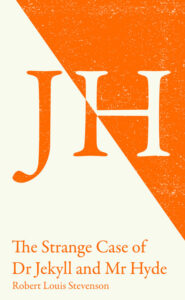Stevenson himself is an interesting character, admitting that what began as nightmares in childhood eventually became full and extensive images and scenes of horror that could last up to a day. Medical professionals in today’s society would probably would call these episodes paranoid delusions or the results of lack of years of lack of sleep creating a wholly imagined alter ego and blurring the lines of conscious and unconscious thought, ‘unseen collaborator whom I keep locked in a black garret’ – it reminds me in fact of Tyler Durden in Chuck Paslahniuk’s Fight Club, a man’s alter ego who lives in his sleep deprived mind and sets out to destroy him. A fascinating read, The Strange Case of Dr Jekyll and Mr Hyde has many interesting approaches and discussion points and is perfect for classroom use.
5 discussion points
- Language analysis. Refer to page 7 of the Collins Classroom Classics – Dr Jekyll “…There is something wrong about his appearance, something displeasing, something downright detestable”. Analyse the language in the first description of Hyde. What does Stevenson want us to know? What of the story we hear before this account? Now compare your findings to his description on page 16. What else do you discover?
- Symbolism in the novel. “Jekyll’s lab is the ultimate gothic setting and a symbolism of ruin and hidden desires”. Discuss this statement in pairs. What other symbolism have you identified in the novel and how important is it to the reader’s experience?
- Thematic expansion. Set your classroom up into 6 areas and leave a laptop or piece of A3 on each with one of the following themes: sin, hell, consequences, Victorian London, religion and morals. Give students 10 minutes to contribute as fully as they can on each theme, noting ideas, quotes and references on the laptops or pieces of paper. Carousel the activity every 10 minutes and save the next lesson to feedback and discuss each theme.
- Main Protagonist. How important is the protagonist of Mr Utterson to the novel? Use quotes and examples to illustrate your discussion.
- Gothic Literature. Hastie Lanyon gives us a vivid description of potions and transformations in chapter 9. How does the character we are shown personify Gothic Literature? Can you link this theme to any other books you have read or studied? What about TV programmes or films? What do they all have in common? The latter part of the question could also be set as a research activity or homework task
5 Activities
- The idea of a double life or alter ego is a main theme in the novel. If you had two manifestations, what would they be and how would they occur? Would one be good and one evil? Would they have different appearances?
- In Victorian times this novel was known as a ‘shilling shocker!’ and would be advertised in newspapers for all readers – their price made them accessible to most Victorians. Create an advert for The Strange Case of Dr Jekyll and Dr Hyde in a Victorian newspaper remembering that Victorians loved the macabre and ghost stories. Use as many language devices as you can including hyperbole and sensationalism. Consider your target audience and their needs.
- Divide the class in to small groups or allow them to choose peers they work well with. Ask students to read chapter 10 and then perform a shortened cliff notes version of the chapter, imagining their audience has never read the novel. Skills used: analytical, performance, speaking and listening, summarising, group work, intuition and research and revision.
- Following the earlier activity in point 3, discuss and feedback how students feel the activity went – this is a great opportunity for peer and self-assessment. In addition, ask how do they feel Victorian audiences would feel when reading this chapter? Is it as shocking to a modern audience?
- Mirror image activity – create a cut out of a man or use a computerised image and ask students adapt each side with an illustration or collection of quotes about Jekyll and Hyde. These could then be hung as visual points in the classroom or used to create a giant mobile for revision.
By Joanna Fliski
Joanna Fliski has taught English Literature and Language to 11-18 year olds at an urban comprehensive secondary school for 10 years, she had the highest value added score for her students and was nominated for an outstanding teacher award. As well as teaching Drama and Media GCSE she was head of PSHE, trained teachers and is a behavioural specialist. Joanna currently teaches in primary schools in Bristol. She is also a freelance author, writing resources and teacher guides for the Cambridge IGCSE, creating schemes of work and contributing to a number of educational blogs.
 Collins Classroom Classics
Collins Classroom Classics
Just £1.50 each for schools!
Collins Classroom Classics are complete 19th-century novels and Shakespeare plays accompanied by introductions and glossaries written by experienced teachers.



